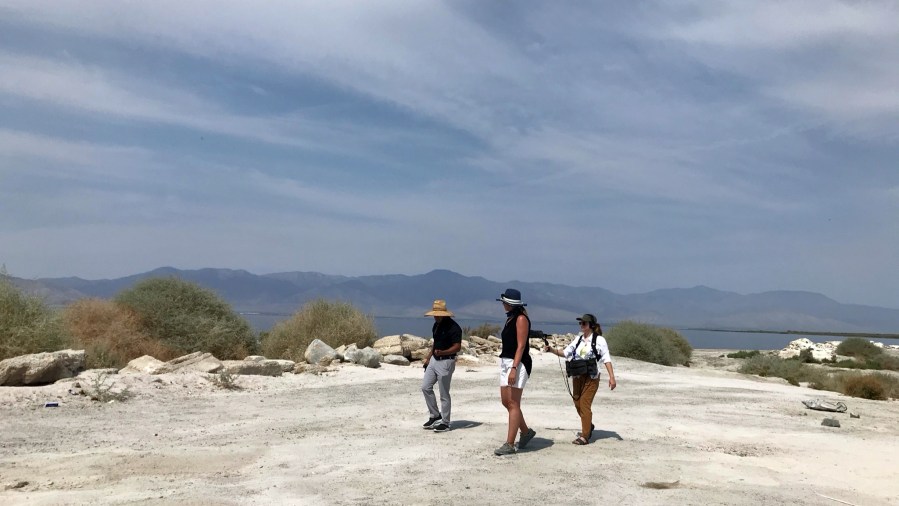Sourcing lithium at the Salton Sea for battery power is one way to go

Your regular host Molly Wood’s new podcast, “How We Survive,” explores solutions to the climate crisis.
In the latest episode, “The Resource,” Molly visits the Salton Sea region of California, its mud volcanoes, moving geyser, and lithium-rich sea — lithium, as in the lithium needed for batteries. A Tesla needs about 100 pounds of lithium for its battery, according to Dave Snydacker, CEO of Lilac Solutions.
“And a cellphone would be a few grams of lithium salts,” Snydacker told Wood. “And to produce that much lithium, you’re talking about a tanker truck full of brine.”
Getting that brine out of the ground is a challenge. The following is an edited transcript of my conversation with Molly on the process.
Molly Wood: Right under the Earth’s crust, there is this extremely hot, like 600° Fahrenheit, briny, salty water that companies are already using — they pump it up and flash off the steam and create geothermal power. So it’s already being used to create renewable energy. And it’s full of all of these minerals and metals, including lithium.
Kimberly Adams: Right, and lithium is the one that we really care about, because this is what goes into all of these batteries that we need.
Wood: Exactly. Lithium is sort of, and has been for a long time, the holy grail of the brine in the Salton Sea. You have this nice situation where companies that are already creating geothermal power want to figure out how to efficiently extract lithium. There’s enough lithium in this brine in the Salton Sea to potentially meet up to 40% of the world’s demand.
Adams: So then how does lithium extraction fit into the economy, and I guess — I hesitate to say — the ecological landscape?
Wood: The great thing about getting lithium out of this brine in this region of the world is that you also really need a geothermal power plant in order to do it. So you incentivize green energy, and do this lithium extraction in the process of creating that energy. Compared to hard-rock mining in Australia, or open-pit mining, like we talked about when we visited Nevada earlier in the season, it is more environmentally responsible. It has a very low carbon footprint. On top of that, it’s in a region where the community really wants this to succeed. They need the jobs, they need the economic development. So in that way, if it all works, it’s kind of a model for resource extraction in the U.S. and other parts of the world.
Adams: Some of the analysts you contacted about this were kind of skeptical about these extraction plans. Why is that?
Wood: It is, for one thing, extremely difficult. It is not easy to work with 600° Fahrenheit salty water. The brine tends to eat everything that it comes into contact with, eventually. And, more importantly, no one has ever figured out how to extract lithium at a commercial scale.
The future of this podcast starts with you.
Every day, the “Marketplace Tech” team demystifies the digital economy with stories that explore more than just Big Tech. We’re committed to covering topics that matter to you and the world around us, diving deep into how technology intersects with climate change, inequity, and disinformation.
As part of a nonprofit newsroom, we’re counting on listeners like you to keep this public service paywall-free and available to all.
Support “Marketplace Tech” in any amount today and become a partner in our mission.


















